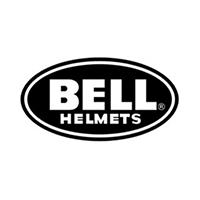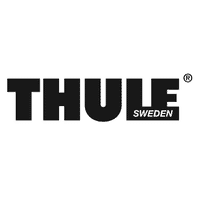Six (6) Tips to Stop Punctures
Punctures are a cyclist's worst enemy because they can not only ruin a perfectly good ride but also make you late for work. In this article, we will talk you through some ways to protect your bike against the dreaded puncture.
.jpg)
Tyres
Tyres are the main contact point with the road; they are the first line of defense against punctures. Stronger tyres will resist objects like nails or thorns from piercing the tyre and tube. To prevent thorns and nails from puncturing them, tyres can have stronger or thicker casings, thicker treads, or even puncture protection strips underneath the tread.
.jpg)
Casing refers to the main walls and body of the tyres. The casing is the first barrier of protection between the tube and the outside world. Tyres with thinner casings are more compliant and can provide a more comfortable ride due to them being more compliant over bumps. The downside is they can puncture easier.
.jpg)
Tyres with thicker sidewalls and under the tread will ride a little stiffer but are more resistant to punctures. Manufacturers use different materials like kevlar and proprietary materials that use strong, tight-knit threads to ensure objects don't make it through to the tube.
This is the easiest and most reliable way to prevent punctures on the road on a commuter bike. Perfect for getting you to work and back every time. Using good tyres is ideal as a first defence against the dreaded puncture and the first step in the right direction.
Shop Tyres
.jpg)
Tyre Inserts
Tyre inserts are made of specialised foam that is placed between the tyre and the tube. They add a big barrier between the tyre and the tube that prevents thorns or sharp objects from reaching the tube.
.jpg)
An added benefit of tyre inserts provide is protection when the tyres are running with low pressure. Because the foam replaces the space air would usually occupy, it helps the tyre keep its shape. The foam also prevents rim damage as it acts as a cushion between the rim and the road. While you can ride the bike with just the foam in, it's not advised as it can damage a tyre and rim if used excessively.
.jpg)
Shop Inserts
Pressure
.jpg)
Tyre pressure is just as important for puncture protection as it is for rolling resistance and grip. When the pressure is too low, the risk of a pinch flat or being punctured by sharp objects.
.jpg)
A pinch flat occurs when the tube is compressed between the tyre and an object like a curb. At this point, the rim will split the tube and cause a puncture. Lower pressures will increase the chances of pinch flats because there will be less resistance to the hits. We recommend checking your pressures before every ride to ensure you haven't lost any air.
.jpg)
Higher pressure will deflect objects that want to puncture the tyre instead of letting them push through. When softer, the tyre will wrap around the object and make it easier for the sharp objects to get through the tyre. You want to ensure you keep optimal pressures in your tyres to reduce any possible punctures in the future.
Shop Pumps
.jpg)
Tubeless
The easiest way to stop tubes from being punctured is to remove them completely. Tubeless rims are sealed using tape to make them airtight. The tyre has a tighter bead, and the casing is sealed more thoroughly, so they hold air within themselves. This technology removes the tube and reduces punctures significantly.
.jpg)
While it is less likely, tyres can be punctured as well. To reduce the chances of losing all the air in the tyre, they have a "sealant" sloshing around in the tyre. Sealants are often made of latex, and they will rush to the hole and plug it. The liquid sealant solidifies and will not let air escape. It will seal the hole for a moment, but it will allow the tyre to be used in the future.
The sealant doesn't require any extra maintenance apart from checking the level every 6-8 months. For tubeless to work effectively and efficiently, you need to make sure both your tyres and rims are tubeless-ready or compatible. Some tubes are available with sealant; however, they are not as effective because they often don't have direct air exposure. Tubeless tyres work much more effectively over time.
Shop Tubeless Accessories
.jpg)
Tubes
Tubes may seem like they are all the same, but there are some small differences between products. There are tubes made of different materials like latex and butyl. Some even contain graphite particles for better air retention. For commuting and city riding, some tubes run a thicker tube wall on the outside of the tube to prevent thorns from getting through.
.jpg)
The tubes with thicker outer walls are heavier, so the rider takes a bit more effort to get up to speed. The benefit is that it takes more effort from thorns or nails to get through. A thicker wall also means the thorn or nail has to be longer to create a hole that will let the air out.
While they add an extra barrier against punctures, they are not a cure. If you have worn tyres or are running tyre pressures that are too low, you will still get punctures. Suppose you are getting repeated punctures even with these tubes. In that case, it is important to check your tyres for wear, sharp objects in the tyre or that you are using the correct pressures while riding.
Shop Tubes
.jpg)
Stay out of the mess.
The number one way to effectively prevent punctures is to not ride over sharp objects. We know this is near impossible, but there are ways to avoid them. Riding on clean roads, out of the gutters and away from debris will reduce the chances of hitting anything that will damage your tyres.
Staying away from rocks, sticks, and broken glass is the best way to stop them from ever hitting your tyres. That is why we recommend you know your route and stay away from the rough patches of road.
 AUS
AUS USA
USA




.jpg)






















